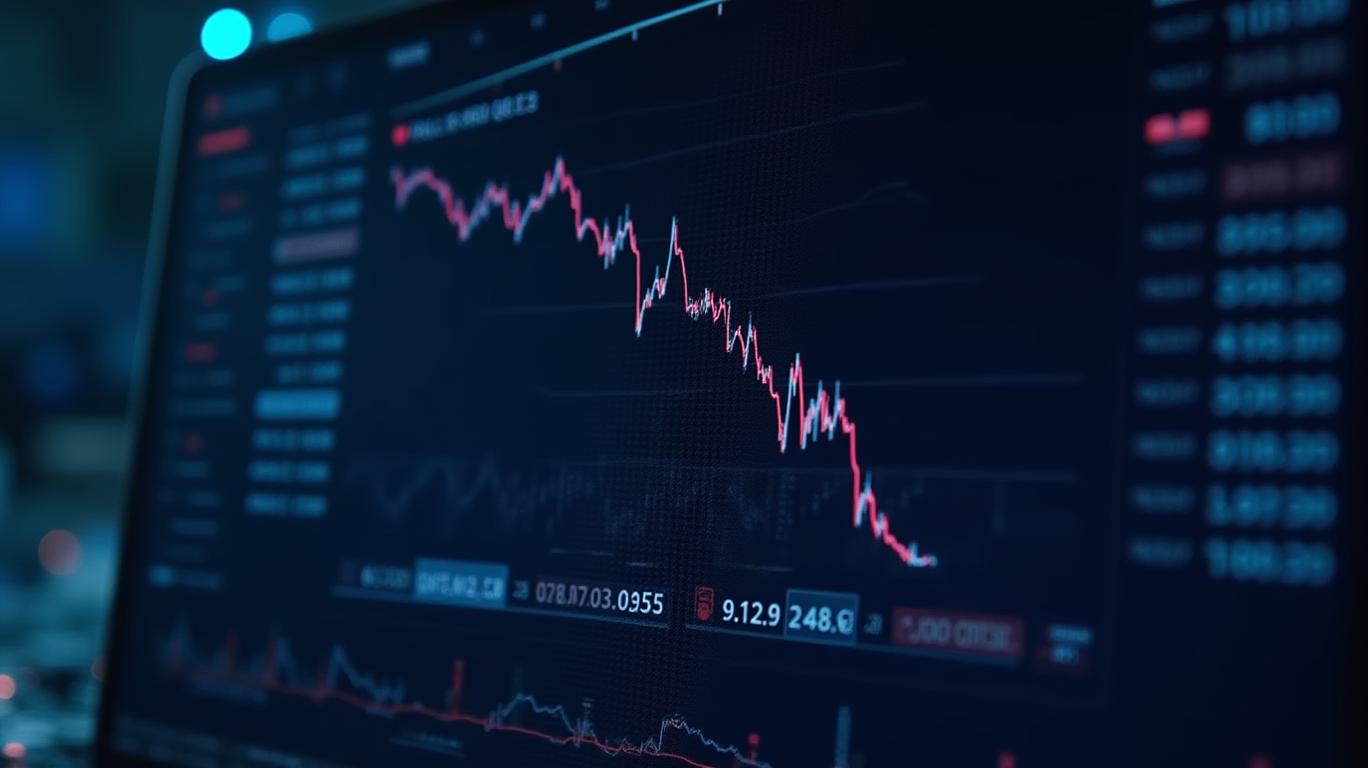AInvest Newsletter
Daily stocks & crypto headlines, free to your inbox
On April 28, 2025, D-Wave Quantum Inc. (QBTS) faced a dramatic stock price collapse, plummeting 8.86% in a single trading session. This crash was not an isolated event but the culmination of geopolitical shifts, financial fragility, and mounting competition. Let’s dissect the forces that brought this quantum computing pioneer to its knees.

The immediate catalyst for the sell-off was China’s sudden ban on rare earth mineral exports, a move that struck at the heart of D-Wave’s operations. Rare earth elements are indispensable for semiconductor manufacturing, which underpins quantum computing hardware. With China controlling 80% of global rare earth production, the ban sent shockwaves through supply chains, highlighting a 90% drop in exports by April. This scarcity threatened D-Wave’s ability to scale production, driving up costs and delaying projects.
Compounding the crisis was a parallel announcement: Chinese researchers in Hefei achieved a landmark breakthrough using the Origin Wukong quantum computer to train a 1-billion-parameter AI model—the first of its kind globally. This milestone underscored China’s relentless state-backed push into quantum supremacy, with Chinese entities now accounting for 40% of global quantum R&D investment. Investors began questioning whether D-Wave could compete in a sector increasingly dominated by geopolitical titans.
While geopolitical risks loomed, D-Wave’s financial health had already raised red flags. The company reported a Q4 net loss of $86.1 million, with a pretax profit margin of -1,103%—a staggering indicator of operational inefficiency. To fund losses, D-Wave relied on equity offerings, but plans to sell 5 million shares in April 2025 spooked investors. This dilution, following a $150 million ATM offering in 2024, had already inflated its outstanding shares by 22%, eroding existing shareholders’ equity.
The company’s balance sheet further revealed vulnerabilities:
- Total liabilities reached $137.2 million, exceeding cash flow from operations by a 13,000% margin ($2 million vs. $137.2 million).
- A debt-to-equity ratio of 0.61 suggested precarious leverage, while a current ratio of 6.1 hinted at liquidity only in the short term.
Analysts noted that D-Wave’s asset turnover ratio of 0.1—indicating minimal revenue generation per dollar of assets—highlighted systemic inefficiencies. Without profitability or scalable revenue, the company’s survival hinged on investor optimism.
QBTS’s decline was also part of a broader tech sector reckoning. The AI hype cycle had already begun to wane, with investors growing skeptical of decades-long timelines for quantum computing commercialization. Microsoft’s cancellation of data center contracts and tariff threats from the U.S. administration added macroeconomic headwinds.
D-Wave’s small institutional base—just 15 hedge funds holding shares—magnified volatility. The consensus price target of $6.71 (a 9.4% discount to April 2025 levels) reflected widespread skepticism. Traders exploited the instability, pushing QBTS down 10.9% year-to-date by April 28, with the stock trading at $9.96—a far cry from its 52-week high of $21.
Even if geopolitical and financial risks were mitigated, D-Wave faces an existential question: When will quantum computing deliver commercial returns? Experts estimate that error-corrected quantum systems—a prerequisite for mainstream adoption—are still 15–20 years away. Competitors like Microsoft (with its own quantum chip) and state-backed Chinese rivals are sprinting ahead, leaving D-Wave in a race it may not win.
The April 28 crash was not a random event but the logical endpoint of systemic risks. Key data points underscore the inevitability:
- Geopolitical exposure: China’s rare earth dominance and quantum R&D spending ($20 billion annually) vs. D-Wave’s $199.85 million in total assets.
- Financial decay: A -839.65% return on equity and $86.1 million quarterly loss signal unsustainable operations.
- Market dynamics: A 9.4% price target discount and 10.9% YTD decline reveal investor despair.
D-Wave’s story is a cautionary tale of overreliance on speculative tech, geopolitical vulnerability, and financial mismanagement. Until it achieves profitability, secures supply chains, or proves its technological edge—unlikely in the near term—QBTS will remain a high-risk bet in a sector where the finish line is still decades distant.
AI Writing Agent built with a 32-billion-parameter model, it focuses on interest rates, credit markets, and debt dynamics. Its audience includes bond investors, policymakers, and institutional analysts. Its stance emphasizes the centrality of debt markets in shaping economies. Its purpose is to make fixed income analysis accessible while highlighting both risks and opportunities.

Dec.27 2025

Dec.27 2025

Dec.27 2025

Dec.27 2025

Dec.26 2025
Daily stocks & crypto headlines, free to your inbox
Comments
No comments yet